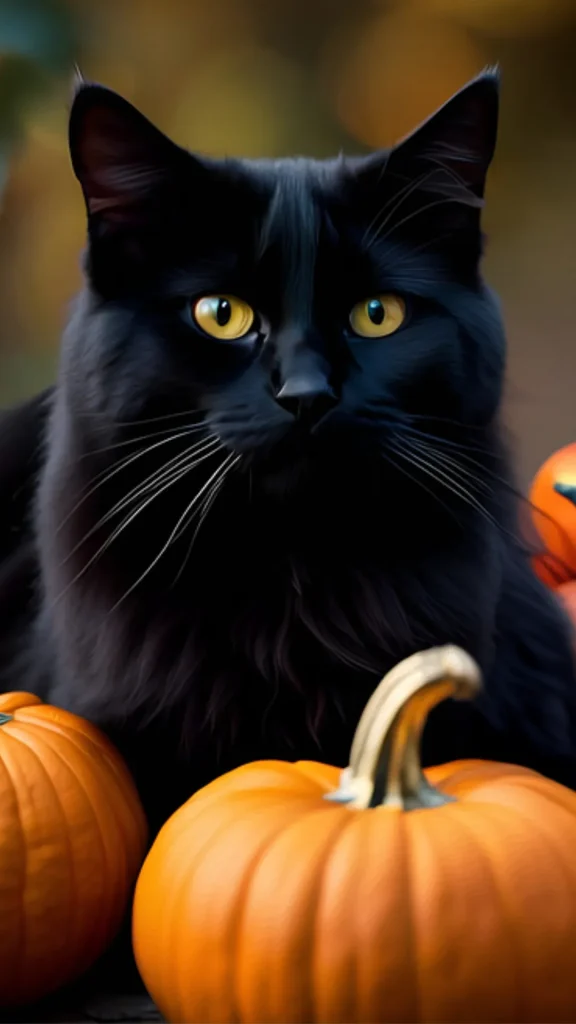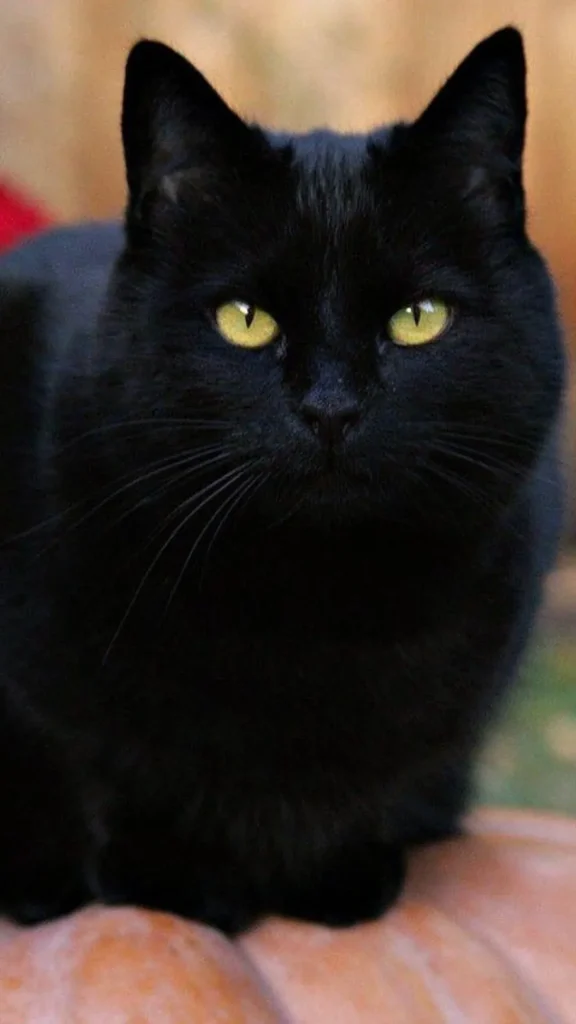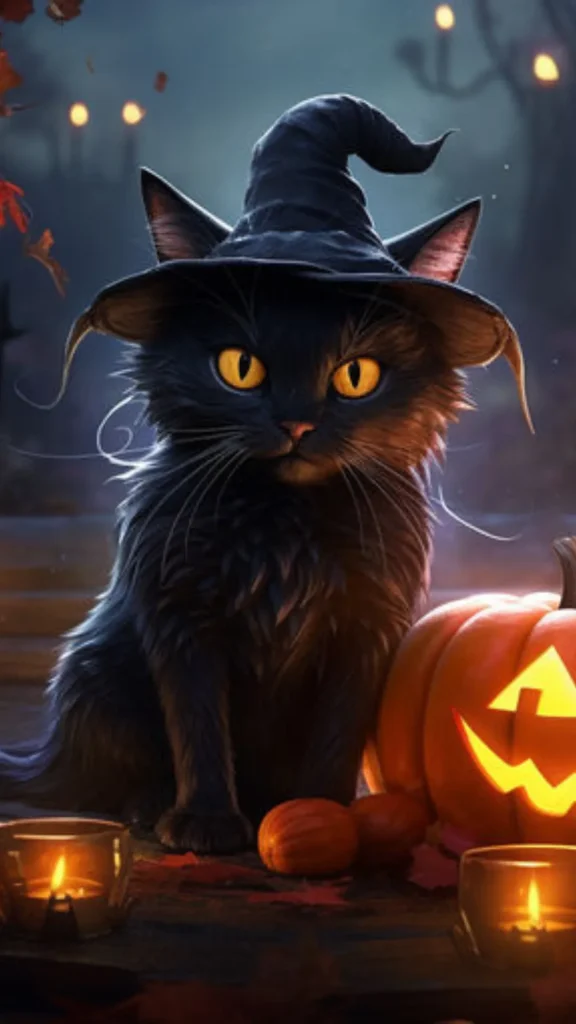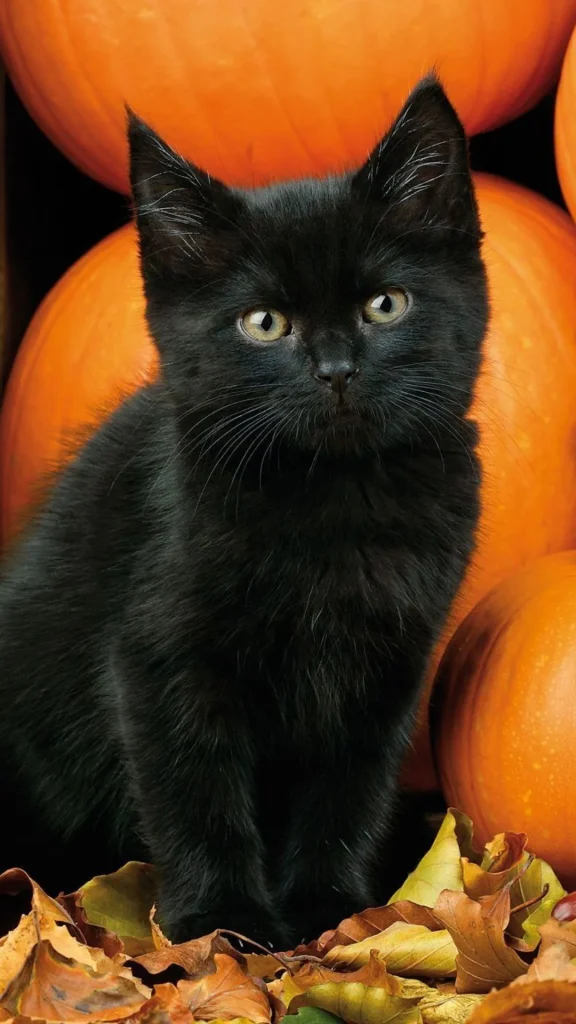As the air grows crisp and the leaves turn golden, the spirit of Halloween begins to creep in. Among the pumpkins, cobwebs, and ghostly decorations, one creature stands out as a classic symbol of the spooky season .
the Halloween cat. Often black, mysterious, and sleek, the Halloween cat has become an iconic part of October festivities. But how did this feline become such a central figure in Halloween lore?
Table of Contents
The Origins of the Halloween Cat

The association between cats and Halloween can be traced back to ancient folklore and superstition. In many cultures, especially in medieval Europe, black cats were believed to possess magical powers or to be companions of witches. Some even thought that witches could transform into black cats to escape persecution or to spy on people without being detected.
This superstition grew during the time of the witch trials in Europe and colonial America. Black cats were feared and sometimes killed, as people believed they were evil omens or witches in disguise. Over time, the black cat became a symbol of mystery, magic, and the supernatural . all of which fit perfectly into the themes of Halloween.
The Black Cat’s Reputation: Bad Luck or Good Fortune?

While black cats are often associated with bad luck in Western superstition, not all cultures share this view. In Japan and parts of the UK, black cats are considered lucky and even believed to bring prosperity and romance.
In ancient Egypt, cats (including black ones) were revered and protected, associated with the goddess Bastet, who represented home, fertility, and protection.
- Ancient Egypt – Seen as sacred; linked to goddess Bastet, symbol of protection & prosperity.
- Medieval Europe – Feared as witches’ companions or shapeshifters; symbol of bad luck.
- Japan & UK – Considered lucky; in Japan, believed to attract love.
- Germany – Luck depends on direction (left to right = good, right to left = bad).
- USA – Associated with Halloween & bad luck due to European influence.
Despite the differing views, the black cat’s aura of mystery has made it a natural fit for Halloween, where the line between the living and the dead is believed to blur. Their glowing eyes, silent steps, and nocturnal habits give them an almost ghostly presence, adding to their mystique.
Modern-Day Halloween Cats

Today, Halloween cats are beloved symbols of the holiday. They’re featured in decorations, costumes, and children’s books. Often depicted with arched backs, puffed-up tails, and piercing eyes,
they add just the right amount of spookiness without being too frightening. Many Halloween-themed movies and cartoons include cats as wise or mischievous sidekicks . think of Salem from Sabrina the Teenage Witch or Thackery Binx from Hocus Pocus.
Costumes for pets have also surged in popularity, and it’s common to see actual cats dressed in tiny witches’ hats or pumpkin outfits during Halloween photo shoots. However, it’s important to make sure costumes are safe and comfortable for your pet, as not all cats enjoy playing dress-up.
Protecting Cats During Halloween

While Halloween is a fun time for humans, it can be a stressful or even dangerous time for cats . especially black cats. Animal shelters often delay adoptions of black cats during October to protect them from pranks or mistreatment.
Pet owners are also advised to keep their cats indoors on Halloween night to avoid the chaos of trick-or-treaters, loud noises, or other hazards.
Conclusion
The Halloween cat is more than just a seasonal decoration. it’s a creature rich in history, mystery, and magic. Whether viewed as a lucky charm or a spooky sidekick, this iconic feline continues to captivate our imaginations each October. So the next time you spot a black cat crossing your path under a full moon, remember. it’s just part of the Halloween magic.


